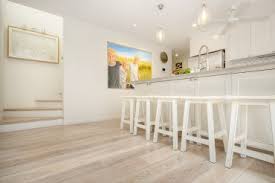Timber Flooring Choice Is One That Will Add Value to a Home
You need to decide on the type of flooring that you want when you are building a new home or remodeling an old one. Here is where it is where many homeowners decide on a timber flooring choice as it offers several advantages, besides its warm and elegant look.
Timber flooring dramatically adds value to a home and properly installed is not prone to cracks forming in the floor. A timber floor can give a rustic air of and significantly adds to its aesthetics. Timber is not easy to install, but will always give you the feeling that your home is new if you maintain it properly and wax or stain it at regular intervals. A floor made from timber is comfortable to walk on and does not feel cold like marble or other stones. Timber floors do require proper and regular maintenance, and though this may add to the cost, the price is worth it. It gives a natural look to a home that offsets all the other decoration.
 In olden times wooden floors were the obvious choice, because of the ease of getting the material. Now, it has to compete with stone, ceramic, synthetic materials and even recycled wood. You can get many types of timber that are ideal for flooring, though oak continues to dominate timber flooring choice. You can save on costs if you find locally grown wood that is suitable for flooring. Timber floors can also be installed over existing floors but will require a proper underlay to deaden noise and aid in fixing. In upper floors, timber floors can be laid directly over the structure made up of any beams and joists.
In olden times wooden floors were the obvious choice, because of the ease of getting the material. Now, it has to compete with stone, ceramic, synthetic materials and even recycled wood. You can get many types of timber that are ideal for flooring, though oak continues to dominate timber flooring choice. You can save on costs if you find locally grown wood that is suitable for flooring. Timber floors can also be installed over existing floors but will require a proper underlay to deaden noise and aid in fixing. In upper floors, timber floors can be laid directly over the structure made up of any beams and joists.
Most timber floors have a tongue and groove construction that enables the entire laid floor to act as one, and also helps to close joints. Some timber floors are of the parquet type, while others may just be adhered on to concrete or other surfaces by adhesives. The timber types that you choose will determine the colour of your floor, though you can always use stain to get different shades. But trees have their variations, and they impart their distinct look to a floor that makes it individualistic and original. Timber colour can change over years, especially if it is exposed to the sun, and curtains are a must for any room that has timber flooring.
 Most timber floors will have the natural marking of knots, veins, and other patterns that are often formed by the way the timber is cut. Manufacturers of timber floors grade their floors as per these markings, and the higher grades will have a clear and consistent appearance. Timber floors must have a natural ability to resist impact, and hardwoods are more durables, will not get indented easily and will resist abrasion. Most timber floors will be nailed down, and these nails will be seen. It is essential that these nails are placed in a regular pattern and in such a way that they remain slightly countersunk. Some timber boards allow nailing in the tongue of the boards and nails will not stay visible. These will have a cleaner finish, and you need not have to worry about nails coming up after the floor has been in use for some time.
Most timber floors will have the natural marking of knots, veins, and other patterns that are often formed by the way the timber is cut. Manufacturers of timber floors grade their floors as per these markings, and the higher grades will have a clear and consistent appearance. Timber floors must have a natural ability to resist impact, and hardwoods are more durables, will not get indented easily and will resist abrasion. Most timber floors will be nailed down, and these nails will be seen. It is essential that these nails are placed in a regular pattern and in such a way that they remain slightly countersunk. Some timber boards allow nailing in the tongue of the boards and nails will not stay visible. These will have a cleaner finish, and you need not have to worry about nails coming up after the floor has been in use for some time.
Solid wood floors may be expensive, but the advent of engineered timber floors has dramatically reduced costs, and many of them are made so well that you cannot easily differentiate them from solid timber floors. Timber flooring choice imposes the need for proper maintenance through regular cleaning and sweeping. It can be waxed or stained, and it is possible to periodically every few years to sand and create a new looking floor.